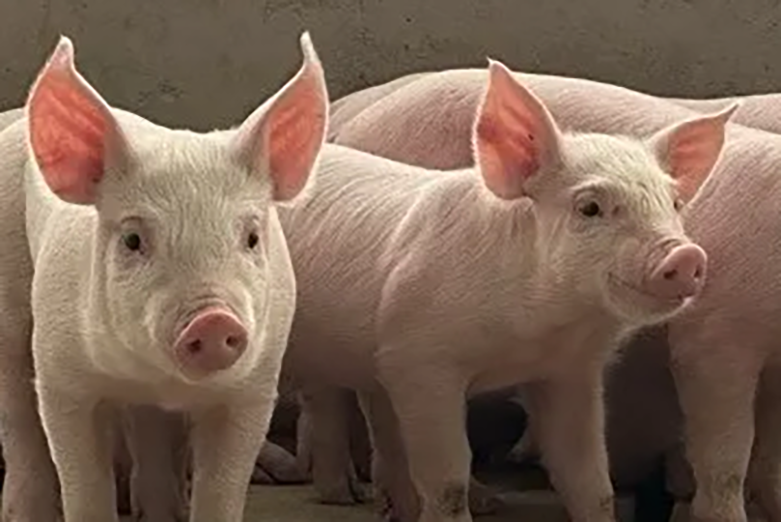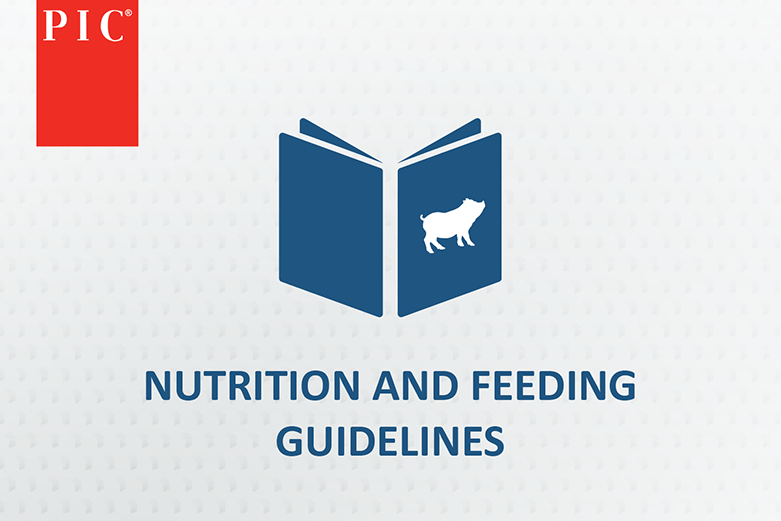Manage nutrition for heavy and light gilts with individual diets to boost whole herd performance.
In two years, most of your current sow herd will be replaced by gilts, which makes quality gilt development crucial. Gilt development means more than getting a gilt to the right breeding age. It means setting her up for success through her first parity (P1) and beyond, so she can be a profitable member of your herd.
Good and bad reproductive rates directly correlate to good and bad gilt development. And gilt development is up to you.”
Jamil Faccin, Ph.D., postdoctoral researcher at Kansas State University
Many factors affect P1 development. Nutrition plays a large role in a female’s lifetime success and must be managed carefully. Among other things, nutrition impacts a gilt’s weight at puberty, affecting her breeding success. Every herd has a bell curve of gilt growth, and there are nutritional tactics to improve the potential of the gilts at either end of the curve.
Increased gilt growth is a double-edged sword
Advanced genetic selection has improved reproduction rates and growth, so management must keep progressing, too. Modern genotype females are faster-growing and leaner than their predecessors. Maternal lines are growing nearly as fast as commercial pigs, gaining only 4,5 gram per day less in average daily gain.
PIC research shows, on average, gilts are 7.6% heavier at 210 days of age than they were six years ago. The number of gilts weighing more than 160 kilograms has more than doubled in that time. With more gilts that are heavier at a similar breeding age, the likelihood of breeding overweight gilts increases.

Adjusting nutrition and management of heavyweight gilts during development can help reduce maintenance nutrient requirements, and improve sow longevity and lifetime productivity.
Heavier gilts become heavier sows in subsequent parities, so they will need more energy for maintenance throughout their lives. They could also be at increased risk of lameness or injury.
Because gilts are growing more quickly, their skeletons are bearing the stress of increased weight. Slowing down growth for the gilts on the heavy end of the bell curve can improve longevity.”
Steve Dritz, PIC Director of Global Technical Service
PIC research shows that feeding heavyweight gilts between 14 and 26 weeks a diet with lower amino acid levels and less energy than PIC’s dietary recommendations for average-sized gilts can slow down growth and actually improve longevity and performance.
The low-nutrient-dense diets reduced the growth rate by 5 to 7%. These gilts were 5 to 7 kilograms lighter in body weight than the control groups but experienced 10 to 12% worse feed efficiency.
Dritz says, “This makes sense because gilts have to eat more of a less-nutrient-dense feed.”
In the trial, the gilts fed the low-nutrient-dense diet through 26 weeks of age produced more pigs per gilt through four parities, and numerically improved their longevity by 12.2%. Larger-scale trials are in progress to confirm these findings.
Gilt size can be managed through diet but should be done carefully!
Steve Dritz, PIC Director of Global Technical Service
Timing is crucial. Dritz suggests this type of dietary change works best before puberty — but should be implemented with caution because mammary development also happens during this time. Nutrient restriction before puberty creates the potential for compensatory growth. Timing and amount of restriction can also lead to risk of abnormal behaviours.
After reaching puberty, gilts can be fed a normal gestation diet from the heat-no-service period until breeding, says Uislei Orlando, PIC’s global nutrition programs director.
Producers that use calipers on gilts at breeding will often identify a large proportion of gilts as fat, and thus reduce feed intake with a purpose of reducing body condition. However, this will result in underfeeding that gilt during gestation. Gilts are still growing and developing during their first gestation and inadequate feeding may jeopardize their growth and development, which could lead to poor lifetime productivity.
Uislei Orlando, PIC’s Global Nutrition Programmes Director.
More females are heavier but not fatter, he says, due to improved efficiency genetics. PIC does not recommend using the caliper with gilts until they are moved into farrowing to estimate changes in body condition during the first lactation. Using calipers on these females at their first gestation could falsely identify them as over-conditioned, and the subsequent underfeeding could stunt their growth.
“Never feed gilts below the PIC recommended base level of 5.9 MCal ME or 4.4 MCal NE per day throughout gestation,” Orlando says.
Other feeding considerations affecting reproduction
No matter the nutrient status of your gilts’ diet, ensuring they get the proper vitamins and minerals will result in optimal reproductive performance. Minerals affect structure and reproductive functions. PIC experts recommend feeding developing gilts greater calcium and phosphorus levels than a market gilt, and adding phosphorus and extra choline, pyridoxine, folic acid and biotin.
On the other side of the herd bell curve, flush feeding is a good tactic for slower-growing females that might not reach the body weight target at breeding. Gilts should hit the target between 135 to 160 kilograms of body weight at breeding on the second oestrus. Flush feeding increases the energy intake in those gilts that did not reach the body weight target yet, increasing litter size as a result of improvements in ovulation rate and embryonic survival.
Gilts should be in a weight-gain situation during the interval between heat-no-service and breeding, says Carine Vier, PIC nutrition specialist.
Recent trials have shown flush feeding linearly increased average daily gain and gilt weight at breeding. If the gilt is close to or within the target breeding weight, flush feeding does not improve ovulation rate or embryonic survival. We do not need to push gilts to eat more with ad libitum feeding during the heat-no-service period. We need to try and avoid stress.”
Carine Vier, PIC Nutrition Specialist.
Whether you’re focusing on one side of the herd bell curve or the other, none of these nutrition recommendations is a one-size-fits-all strategy, the experts agree. Don’t leave gilt development to chance. Knowing which gilts would benefit from which diet changes is crucial and will pay dividends in the long run.
This article was originally published in PorkBusiness magazine. Here is the link to the original article: Are you leaving gilt development to chance? | Pork Business




